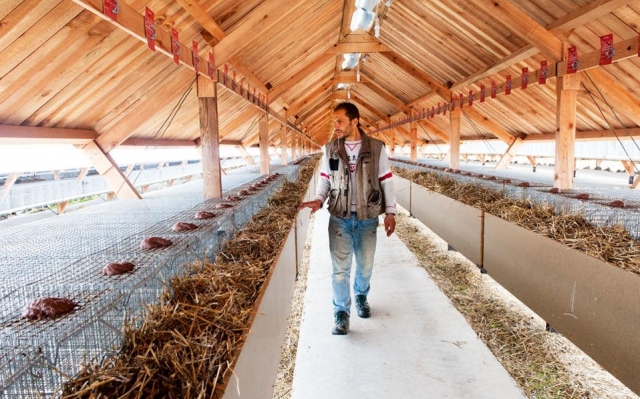Photos: Alexandros Avramidis, kathimerini.gr
Apparently, the farms are a good solution for professionals hit by the crisis, the case of developer George Kazikopoulos being typical. With 60 unsold flats in Thessaloniki, he decided last autumn, along with 20-year-old Andreas Michos, to invest in a farm on the border between Grevena and Kozani. They bought 3,000 minks (at the price of 90 euro each) from a countryman of theirs and in March began mating the animals in order to reproduce them. Gradually they will add a slaughtering and skinning plant to close the production cycle.

The animals are divided according to their fur colour (white, black, brown). They are fed once a day with 160 g of special food, namely leftovers from slaughterhouses fortified with vitamins, except during the reproduction period when the amount of food is almost double. In general, the food is the greatest expense, as a farm with an average capacity of 20,000 minks needs almost three tons of food per day worth 1,056 euro. Both partners have calculated that if they sell at international markets in March each fur for 50 euro (the price depends on the fur quality and is in the range of 30 euro to 180 euro), their profit will be 25 euro per mink.
We asked Andreas about the probability of this turning to farms en masse being just another bubble. "No one guarantees anything in the free market. We have taken a business risk and we will work hard to succeed," he replies with realism. Moreover, he is right as the market offers no guarantee of success. However, the state, which defines the conditions for the business operation should be more interested in the security of the farms. It is no trifle that the population of minks will exceed one million after the birth period in May.